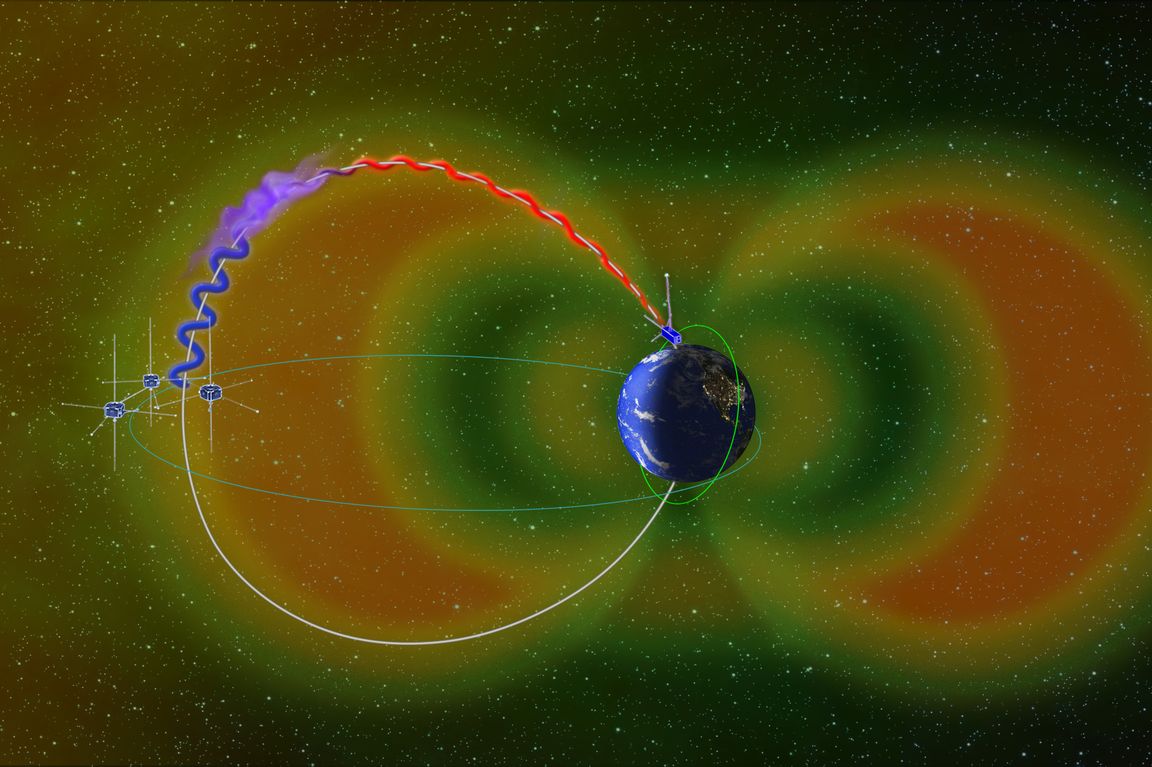Hi readers!
Here is some other interesting information for you.
The picture above is showing
Electrons in a Van Allen radiation belt (blue) are triggered by whistler waves (purple) to rain down (red) toward the north pole. Source: Zhang, et al./Nature Communications, 2022
Robert Lea: a space science journalist in the U.K, published on October 8th, 2024, in Journal Nature Communication about “Killer electrons” and found that killer electron play pinball (a game in which a ball is forced by a needle to score points as it rolls down a slanting surface among pins and targets) with space-weather.
According to her, Killer electrons that are hidden in the radiation belts around the Earth could be removed by lightning to create a game of cosmic pinball that influences space weather around our planet interesting, isn’t it?
You can read full article at the following link
https://www.livescience.com/space/killer-electrons-play-pinball-with-space-weather-around-earth?
The discovery was made when a team of scientists at the University of Colorado, Boulder, was studying satellite data that showed high-energy and high-speed “hot” electrons. These Killer electrons are wrapped around our Earth in two belts in which high-energy particles are trapped. These belts are held in place by the magnetosphere (the region around a planet dominated by the planet’s magnetic field) and are known as the Van Allen radiation belts that serve as a loose barrier between Earth’s atmosphere and its space environment.
The Killer electrons could be dislodged from the inner radiation belt: a region of charged particles.
Scientists at the University of Colorado Boulder says that “lightning strikes across earth could make ultra hot “killer electrons” rain down around our planet and that the space and Earth weather can unite to play “cosmic pinball.”
According to researchers, the inner region of the belts is considered to start at an altitude of around 600 miles (966 kilometers) while the outer layer is thought to start around 12,000 miles (19,312 km) over our planet’s surface.
Space weather is driven both from above and below the belts.
Killer electrons along with huge amount of energy race through these belts approximately at the speed of light.
Not only can these Killer Electron penetrate satellite shielding, but they can also cause microscopic lightning strikes that can damage or even destroy vital and delicate spacecraft components.
The researchers currently don’t know how often the sessions of “killer electron rain” occur but they opined that the act is most common during periods when the sun is active and blasts more high-energy electrons at Earth to be grabbed by the magnetosphere and replenish the Van Allen belts.
The finding of the current research could help scientists protect satellites and other instruments in orbit from damage and assist in protecting astronauts from potentially lethal radiation on future space missions. It also suggests that space weather and Earth weather are more intertwined than previously suspect
Scientists have known for some time that charged particles can fall from the outer radiation belt toward Earth. However, the current study hinted for the first time that Low-energy, or “cold,” particles can also fall from the more stable inner radiation belt. It’s also the first hint that this “electron rain” can be triggered by lightning. According to the theory postulated by the team,
“when lightning flashes in the sky over Earth, radio waves are launched toward space. If these radio waves hit electrons in the radiation belts around our planet, they can shake loose electrons, causing “lightning-induced electron precipitation” or “electron rain.”
Did you realize dear readers how many amazing things are happening in the world which we are not aware of. The reason is, we are largely uneducated, and we are uneducated because we have no planning to use our precious human resources for constructive work required for a country’s progress. We have mastered one art and that is BEGGING which we are exporting. What a shame?
See you next week. Take care, bye.





